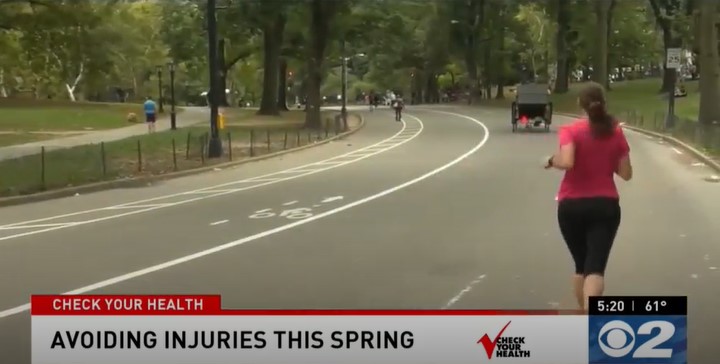Spring is right around the corner and even though people can still enjoy winter sports, many are getting ready for warmer outdoor activities. This transition in recreation also brings a new risk of possible injuries, which doctors say are common this time of year.
Claire Gross, MD, sports medicine physician at Intermountain Healthcare, says winter and spring activities often work muscle groups in different ways. In many cases, as people transition to outdoor activities, the injuries come from overestimating one’s fitness level.
“Even if you partake in winter sports, it works muscle groups in different ways and our overall activity level is usually lower in winter,” said Dr. Gross. “Most injuries we see are from people going too hard and too fast right as the weather gets nicer, and their bodies can’t keep up.”
Researchers have mixed results about what causes certain injuries but have shown they are higher in the spring. One study found there are more ruptured Achilles tendon injuries in the spring, and they’re lowest in the fall.
These overuse injuries can also include a strained back, pulled muscles, and strained tendons. The worst overuse injury is a stress fracture, which is initially a small crack or cracks in the bone culminating into a complete fracture caused by repetitive force on one part of the body like a foot or leg.
Dr. Gross suggests people gradually increase their activity as they begin transitioning to outdoor activities like hiking, running or bike riding in the spring, and she recommends strengthening muscles over stretching. She also recommends not increasing activity more than 10 percent per week.
“Newer research shows stretching right before an activity can lead to injuries,” said Dr. Gross. “Strength training can help build up the muscles in your body and make them less susceptible to injuries.”
Dr. Gross says stretching is recommended after an activity. Static stretching includes hamstrings, arms, and quad holds for 20-30 seconds. These are great for flexibility, but not before strenuous activity.
A warmup can consist of things like range of motion activities like slowly swinging arms and legs in circles or doing air squats. These activities aren’t done intensely which why it’s best before physical activity.
Also, she recommends that you start off slowly and gradually increase your speed or resistance with your intended activity is a great way to warm up. Think of warming up as slowly increasing blood flow and temperature into you working muscles.
“As we tend to sit more during the winter, our core muscles become weaker, starting by training your core will help prepare you for outside activities,” Dr. Gross noted. “Exercises like planks are a good way to train your core. It’s more than just about getting a 6-pack but think of is as the center of our body.”
Another important aspect of avoiding future injuries is to get rest and focus on recovering from a current injury. Many times, people are conditioned to ignore and push through pain thinking this will hasten improvement, but when that pain is from an injury it can end up making things worse.
Dr. Gross says that while some discomfort is part of exercise, pain should not be the goal.
When experts talk about pain and exercise, they use a 0-10 scale with 10 being the worst pain a patient can experience. Caregivers say exercise should be no more than 4/10 or less on this scale. If the pain is higher than this, it is a signal to stop and figure out what is causing the pain.
“The best way to continue staying active is to make sure you take care of any injuries big or small,” said Dr. Gross. “Rest is good for the body and it’s okay to give yourself a break.”
For more information on about sports medicine at Intermountain click here.

